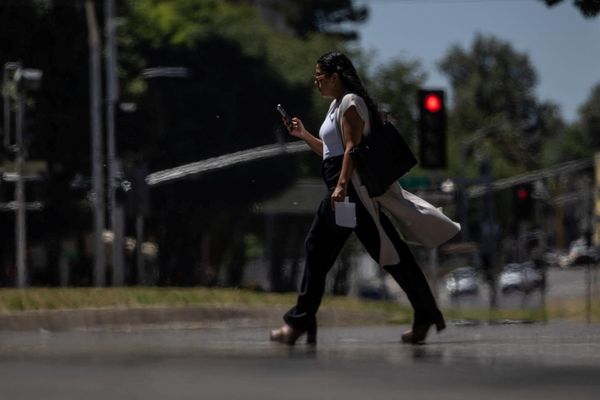
Childhood COVID-19 vaccination rates have stalled, with fewer parents taking their primary school-aged kids to get the jab. Nationally, just 5000 children aged five to 11 received a shot every day last week compared to 47,000 daily doses the week prior.
The slowdown is surprising, and the reasons unclear: with school back in full swing, do parents have less time? Are anti-vaxxers, such as the Convoy to Canberra, having an impact? Are parents simply waiting a little longer to learn more about the vaccine and its effect on kids?
How hesitant are parents?
According to bi-monthly Vaccine Sentiment surveys conducted by the federal government, in January 10% of parents of kids aged five to 11 didn’t plan to get their kids vaccinated, while another 15% were unsure. This is a decrease from December, when 14% said they wouldn’t get their kids vaccinated and 13% were unsure.
Despite the decrease in uncertainty, this hasn’t translated to inoculation data. University of Sydney vaccine update specialist Julie Leask told Crikey the stalling rates were surprising.
“It was a little bit unexpected … and the stalling has been quite remarkable,” she said.
Nearly half of kids aged five to 11 have received their first COVID-19 dose in the month since they were deemed eligible by the Therapeutic Goods Administration, while 78% of kids aged 12 to 15 are double dosed.
“We had very good uptake in the first month [when kids were deemed eligible for the vaccine]. There was a rapid trajectory and update and then we really started to see a plateau,” Leask said.
“Clearly, we’ve reached the point where there was high demand and now we need to reach the remaining people — most of whom are planning to vaccinate.”
What can be done?
Royal Australian College of General Practitioners president Dr Bruce Willett told Crikey misinformation spread on social media was a clear concern, as was the lack of clear communication about the importance of the booster.
“While the message about getting kids vaccinated to protect their grandparents is out there, we don’t necessarily understand that, although COVID-19 is milder on kids in general, there’s still a minority of kids who get complications,” he said.
“Doctors need to emphasis that message about benefits.”
Nicholas Wood, paediatrician and associate director of Clinical Research at the National Centre for Immunisation Research and Surveillance, told Crikey it wasn’t clear why parents hadn’t come forward.
“We don’t know exactly what parents’ concerns are,” he said.
Woods said it was unclear whether parents were concerned about vaccine side effects, perceived long-term impacts of the vaccine or the risk of the disease.
“Parents may be wondering what the benefit of the vaccine is given kids generally catch very mild cases of the disease … in terms of what parents want to know about the safety, we need to be a bit more nuanced,” he said.
He said one of the questions raised was about long-term side effects of the vaccine, and whether in 20 years’ time there could be a link between the vaccine and other diseases.
“[But] there’s never been any vaccine linked to long-term diseases,” he said.
“We know most vaccine side effects appear at the six-week mark, so if anything is going to happen, it’ll happen by then.”
He said those waiting for five-year outcome studies had to weigh up the risk of COVID-19, the chance of severe disease and developing long COVID during that period.
Another concern, Wood said, was that people were becoming fatigued over the ongoing doses needed. Israel has started rolling out fourth doses to its population as booster dose efficacy begins to wane.
“There are probably some people saying, I’ll take my chances over getting top-ups of this every four to six months,” he said.
Would targeted messaging help?
Wood said there was “always room for improvement” around targeting cautious communities about the benefits of the COVID-19 vaccine, with information not widely disseminated, limited TV ads and concerns around reaching multicultural and linguistically diverse communities.
But Leask said she wasn’t sure public health messaging campaigns would solve everything, especially in the absence of data.
“We don’t know what the barriers are in each population,” she said. While there’s generally slower uptake in lower socioeconomic groups and huge disparities among Aboriginal and Torres Strait Islander populations, understanding concerns was a key issue.
Given most parents have or are planning to vaccinate their children, Leask said the drop-off could simply be down to logistics and practicality. Kids might have caught COVID-19 so their parents are waiting the recommended six weeks before getting them vaccinated, they might be busy with the new school year, or there might not be appointments at convenient times.
“Having convenient vaccination centres and slots, with healthcare workers available and recommending it, can sometimes overcome mild hesitancy,” she said.
Leask will be hosting webinars and round-table discussions in the coming weeks with experts and policymakers to better understand the cause of the slowing rates of uptake.







